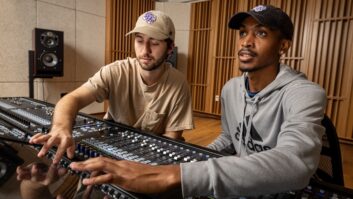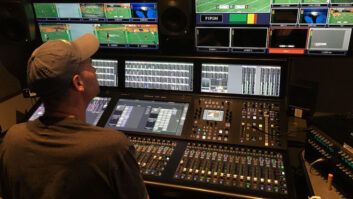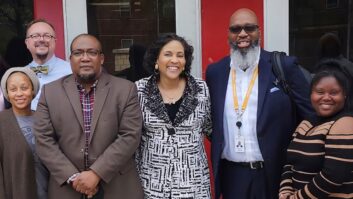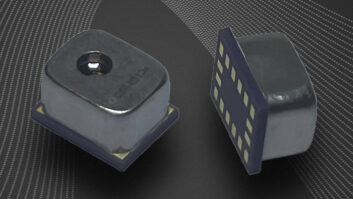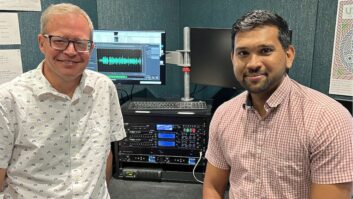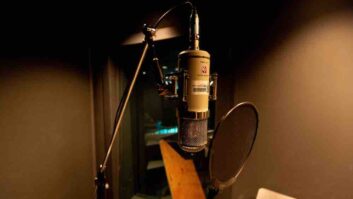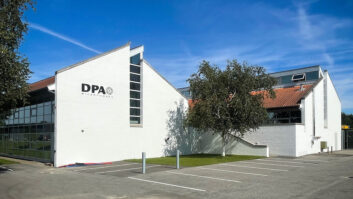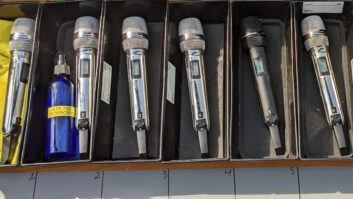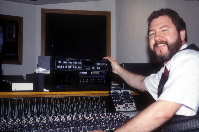
The audio department at the College of Fine Arts at the University of Texas in Austin, led by chief engineer Andy Murphy (pictured), has used a SoundField MKV microphone system since 1996 and has no plans to replace it. Since first auditioning the mic, Murphy has found it to be a versatile tool and a great problem solver in recording student and faculty recitals and college ensemble concerts.
“We had the usual challenges associated with a fine-arts college in terms of recording the various concerts in our halls,” Murphy says. “An orchestra concert, for instance, would include a Mozart chamber orchestra in the first half and then a Tchaikovsky romantic piece for full symphony during the second half. Repositioning microphones during a concert is usually not an option.” Murphy learned of the SoundField system. Intrigued by the possibility of altering the pickup pattern remotely, he inquired about getting a demo. “We received the loaner unit and immediately found that it would solve this problem, so we decided to buy it,” he says.
At the College of Fine Arts, Murphy and his team do a variety of recordings, from solo piano recitals to chamber ensembles to symphony orchestras to jazz bands to choirs. Their halls are wired to several control rooms throughout the facility, allowing them to use the right size hall and control room for the project at hand. “We use the SoundField system as a virtual stereo pair,” Murphy says. “But by also capturing the B-format signals, this allows for remixing later to modify mic polar patterns, orientation or even convert to 5.1 surround if needed. Of course, we can also do it on the fly, which is nice because the audience can be in place and not notice a thing. We can optimize the ‘presence’ of the sound versus the acoustic blend between instruments as well as the ‘reach’ into the ensemble. The important thing to me is how versatile this microphone is.”
Murphy uses other microphones along with the SoundField, depending on the type of group. Often, for larger groups, he places omni outrigger mics, such as the Earthworks QTC1, or Neumann and Josephson small-diaphragm models. The output of the microphones is mixed to stereo, then converted to digital format with an Apogee PSX100 and finally fed “live” to three formats: CD burner, DAT and Waveburner Pro on a Mac. For most of its work, the team mixes live to 2-track for archival purposes. However, for session work or anything else requiring post-production, Murphy and the others print to analog multitrack or Digidesign Pro Tools, then go from there. Because the four capsules are coincident, “the phase coherency is excellent, and the sonic image is thus very stable,” Murphy explains. “Mono compatibility is also very important due to the multiple playback options listeners may choose to use.”
Concert material is available to the outside world through Webcasts. The live mixes from specific concerts are streamed live on the web in MPEG-4 generic/44100/2 QQQ 16-bit stereo at 128 Kb/sec for QuickTime and Media Encoder 9 Stereo for Windows Media Player. Concerts that are scheduled for live streaming are listed at the College of Fine Arts Website.
“We do 550 to 600 recordings a year, including those in our own facility and remotely, as well,” Murphy says. “For instance, we might record a performance of Handel’s Messiah in a church. Along the way, we’ve worked with quite a few famous musicians and composers. The composer John Corigliano, famous for his Red Violin soundtrack, was in residence for the UT Wind Ensemble’s premier of his work ‘Circus Maximus’ last year. Other artists we’ve worked with over the years include Vince Mendoza, the Miro Quartet and pianist Anton Nel.”
For more information, visit www.soundfieldusa.com and www.finearts.utexas.edu.
